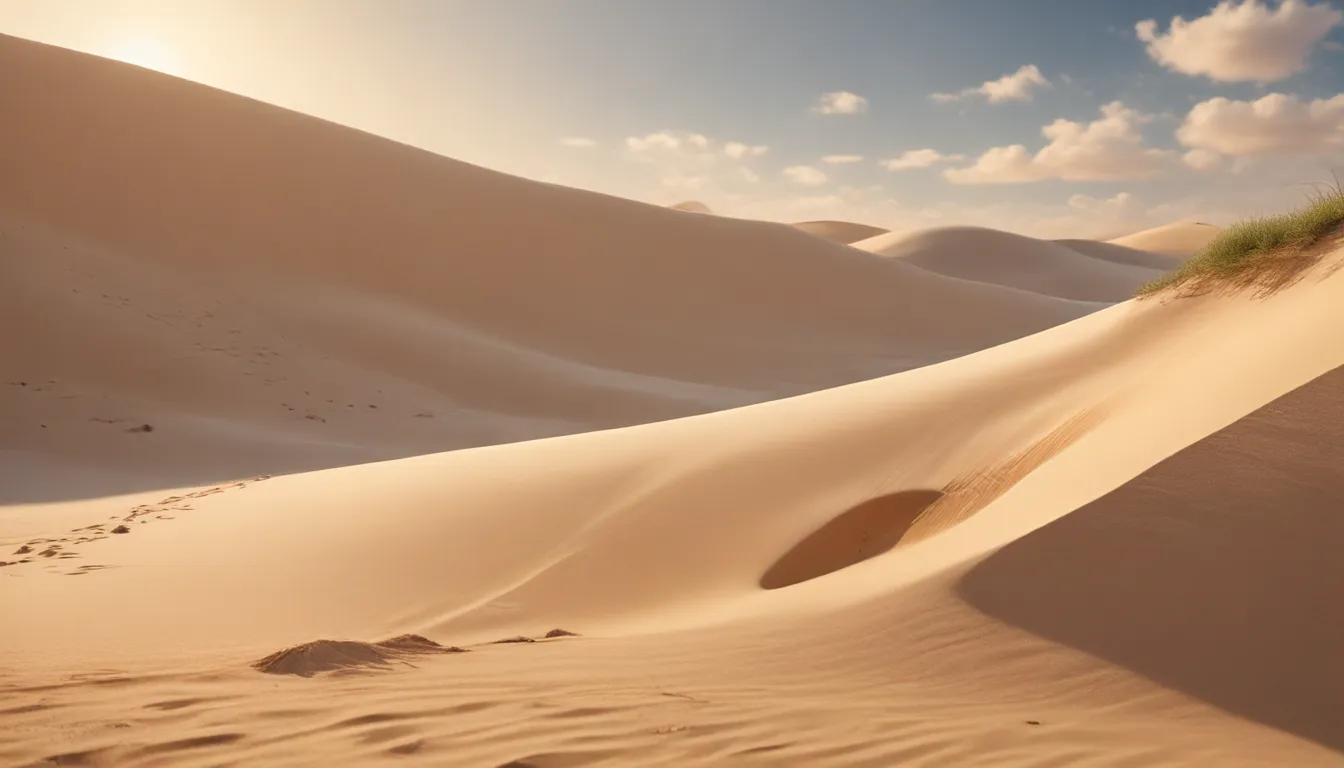A Note About Images: The images used in our articles are for illustration purposes only and may not exactly match the content. They are meant to engage readers, but the text should be relied upon for accurate information.
Sand, a humble material prevalent in nature, harbors a treasure trove of secrets waiting to be discovered. Often underestimated, sand plays a vital role in various aspects of our lives, from building structures to providing a canvas for artistic expression. Let’s embark on a journey to unravel the mysteries of sand and uncover nine captivating facts that will broaden your understanding of this ubiquitous substance.
The Earth’s Most Plentiful Resource
Surprisingly, sand is the most abundant resource on Earth, found in deserts, rivers, beaches, and mountainous regions. Its widespread availability makes it a fundamental element in construction, manufacturing, and various industries globally.
Sand’s Multifaceted Utility
Sand boasts a diverse range of practical applications. It serves as a crucial component in concrete, imbuing strength and stability to buildings, roads, and infrastructure. Moreover, it is integral to the production of glass, ceramics, and electronics, making it an indispensable material in our modern society.
The Unique Character of Sand
Contrary to popular belief, sand is not a uniform substance but a complex amalgamation of tiny particles comprising various minerals and rock fragments. These distinctive compositions depend on the sand’s source, rendering it with unique properties and characteristics.
A Natural Purifier: Sand’s Filtration Power
Unbeknownst to many, sand acts as a natural filtration system. It possesses the remarkable ability to cleanse water by entrapping impurities and particles as water flows through it. This attribute is pivotal in water treatment systems, ensuring access to safe and clean drinking water.
A Haven for Diverse Ecosystems
Beyond its picturesque allure, beaches and sand dunes serve as habitats for a myriad of ecosystems. Sand provides a conducive environment for numerous plant and animal species, including specialized organisms thriving in sandy terrains.
The Enchanting World of Sand Sculptures
From grand castles to intricate figures, sand sculptures have captivated audiences worldwide for centuries. Artists exhibit their creativity and skill by transforming ordinary sand into breathtaking works of art. Sand sculpting competitions and festivals attract a diverse crowd, highlighting the extraordinary potential of this unassuming material.
The Environmental Ramifications of Sand Mining
Despite its abundance, the escalating demand for sand raises environmental alarms. Rampant sand mining, especially in coastal areas, can result in beach erosion, habitat loss, and disruption to marine ecosystems. Sustainable practices and stringent regulations are imperative in mitigating these adverse effects.
Sand’s Reverence in Ancient Civilizations
Sand has held significant cultural and spiritual significance in numerous ancient civilizations. Whether through sand mandalas in Tibetan Buddhism or sand paintings by Native American tribes, it has served as a medium for artistic expression and ceremonial rituals.
A Symbol of Transience and Evolving Time
Throughout history, sand has symbolized the passage of time and the transient nature of life. The shifting sands of deserts and the perpetual movement of waves on beaches remind us of life’s perpetual flux, prompting philosophical contemplations on the impermanence of our existence.
Unveiling Sand’s Mysteries
Sands’ fascinating essence transcends beyond merely beaches and deserts. Delve into Earth’s mysteries by exploring how sediments mold our world through sedimentation. Embark on a geological odyssey into the dynamic rock cycle. Lastly, venture through mesmerizing sand dunes shaped by the forces of wind and time. Each grain of sand encapsulates a narrative waiting to be unearthed.
In Conclusion
As we unveil these nine enchanting facts about sand, it becomes evident that sand is far from a mundane material. It plays a pivotal role in diverse facets of our existence, from construction to leisure, and in sculpting our natural landscapes. Various types of sand offer unique properties suitable for distinct purposes, showcasing the versatility and complexity of this commonplace yet extraordinary substance.
Next time you encounter sand in construction projects or leisure activities, take a moment to contemplate the intricate and versatile nature of this unassuming but indispensable material.
FAQs
- What is sand made of? Sand comprises small particles of minerals, rocks, shells, or other materials, with compositions varying based on its source.
- How is sand formed? Sand is a product of weathering, wherein rocks disintegrate into minute particles over time through processes like wind, water, or chemical erosion.
- What are the different types of sand? Various types of sand include desert sand, beach sand, river sand, and volcanic sand, each featuring unique characteristics suited for diverse purposes.
- Can sand be used for construction? Yes, sand is commonly employed in construction for creating concrete, mortar, and as a foundational material for bricks or paving stones.
- Is sand an infinite resource? Although sand abounds on Earth, it is not an inexhaustible resource. Extraction of sand can have detrimental environmental implications, necessitating sustainable mining practices.
- How does sand act as a natural filter? Sand filters impurities in water, proving invaluable in water treatment processes and natural systems like sand dunes, which mitigate saltwater intrusion.
- What are the recreational uses of sand? Sand finds widespread application in activities such as beach volleyball, sandcastle building, and sandboarding, offering a comfortable outdoor play surface.
- Can sand only be found in deserts? While deserts are renowned for their vast sandy expanses, sand can be found in diverse environments, including beaches, riverbeds, and even underwater.
- What role does sand play in coastal protection? Sand acts as a safeguard against coastal erosion by absorbing wave and tide impacts, thereby upholding shoreline stability.
As we delve deeper into the captivating world of sand, let’s appreciate its significance, versatility, and impact on our lives and the environment. Embrace the intricate beauty and complexity of sand, a substance that embodies both simplicity and profundity.






